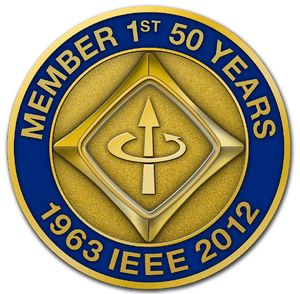First-Hand:Work at RCA on Traveling Wave Tubes
Work at RCA on Traveling Wave Tubes
Let me thank you for your Letter of 6-21-2012, which also happens to be my 90th birthday. I celebrated it with my progeny in our backyard, under centuries-old trees on the shore of the (swimmable) Rockaway River. But let me get to the subject. I attended the EEE meeting this spring in New Brunswick, at which occasion I talked with some colleagues about my career as a design engineer at RCA, both at the Harrison, and the Princeton location (1950s and 60s).
By then RCA's President, David Sarnoff had already died and was honored with a special exhibit with all his accomplishments. The room had to be unlocked every day, and since the lock of the glass door was at the bottom, the fellow in charge that day had to kneel down, which never failed to amuse us minions. After all, Sarnoff's career had started as the telegraph operator who had received the SOS from the sinking Titanic.
Now, back to the story at hand. At the Princeton Lab I worked for a while on Magnetrons, but finally settled on Traveling Wave Tubes. Bell Labs had just put the first communications satellite in orbit using a TWT, and RCA simply couldn't stay behind. At the time, they were still evolving, though already threatened by solid-state. The main hang-up was the "magnet stack" that held the beam together. Platinum-Cobalt magnets were no problem for Bell, but RCA couldn't afford to make them, so I had to fiddle with rare-earth magnets, whose uniformity left much to be desired.
The biggest problem, however, was the lack of any computer software to find the optimum configuration automatically. So I had to translate the equations into Fortran, which was quickly replacing the "slip-stick" as the slide rule was known. Soon as word of my solution spread, my managers got a bit uneasy that others could use it. But the tube, dubbed A1292, was not just another TWT — it was the first such gadget in space! Indeed, since it had to work in vacuum, the seal was doubly critical. And, since weight was so important, the magnets I had to use were made of Platinum-Cobalt, on which Engelhart Industries — as its only source — hoped to make a killing. Alas, there would never be another order.
Submitted by Max J. Schindler
